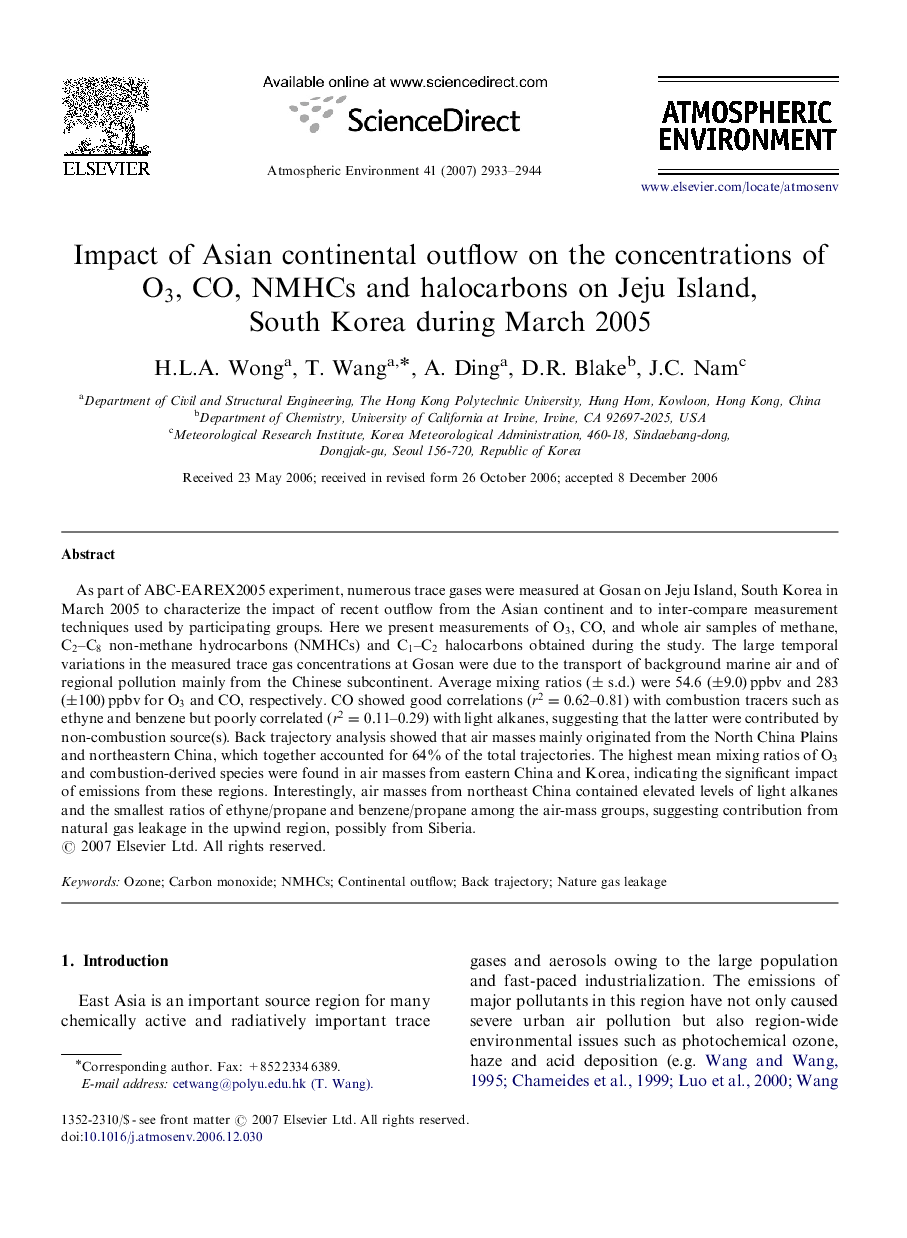| Article ID | Journal | Published Year | Pages | File Type |
|---|---|---|---|---|
| 4443337 | Atmospheric Environment | 2007 | 12 Pages |
As part of ABC-EAREX2005 experiment, numerous trace gases were measured at Gosan on Jeju Island, South Korea in March 2005 to characterize the impact of recent outflow from the Asian continent and to inter-compare measurement techniques used by participating groups. Here we present measurements of O3O3, CO, and whole air samples of methane, C2C2–C8C8 non-methane hydrocarbons (NMHCs) and C1C1–C2C2 halocarbons obtained during the study. The large temporal variations in the measured trace gas concentrations at Gosan were due to the transport of background marine air and of regional pollution mainly from the Chinese subcontinent. Average mixing ratios (±± s.d.) were 54.6 (±9.0)ppbv and 283 (±100)ppbv for O3O3 and CO, respectively. CO showed good correlations (r2=0.62r2=0.62–0.81) with combustion tracers such as ethyne and benzene but poorly correlated (r2=0.11r2=0.11–0.29) with light alkanes, suggesting that the latter were contributed by non-combustion source(s). Back trajectory analysis showed that air masses mainly originated from the North China Plains and northeastern China, which together accounted for 64% of the total trajectories. The highest mean mixing ratios of O3O3 and combustion-derived species were found in air masses from eastern China and Korea, indicating the significant impact of emissions from these regions. Interestingly, air masses from northeast China contained elevated levels of light alkanes and the smallest ratios of ethyne/propane and benzene/propane among the air-mass groups, suggesting contribution from natural gas leakage in the upwind region, possibly from Siberia.
